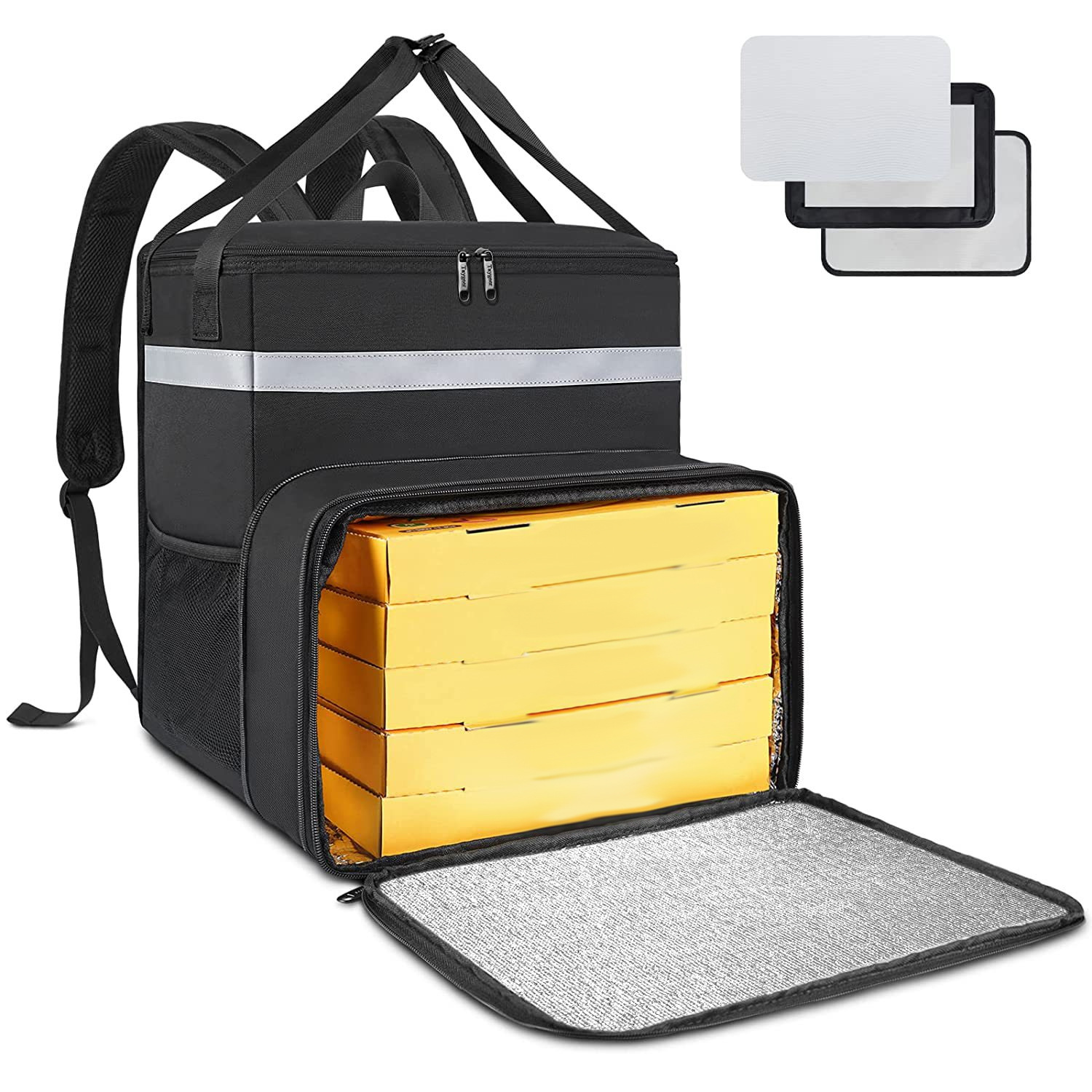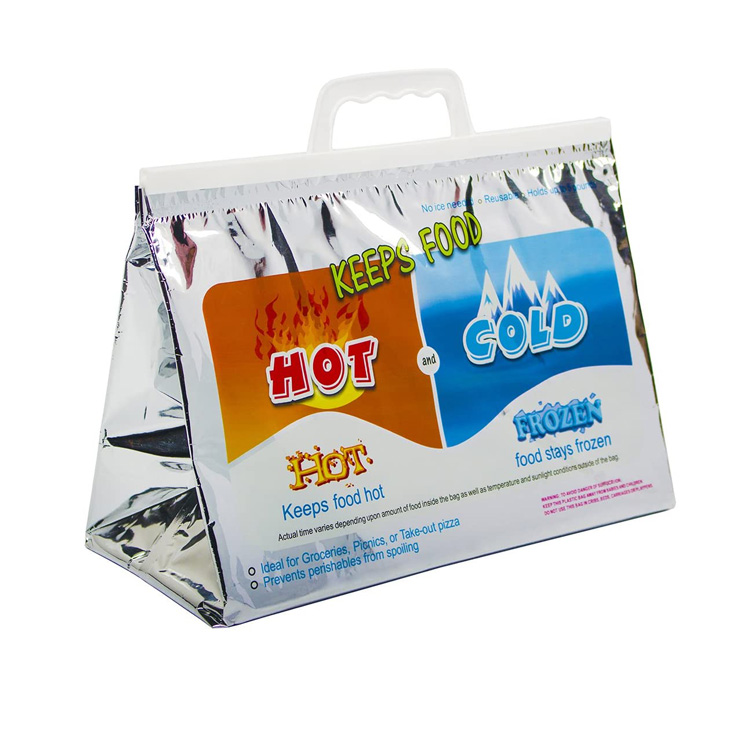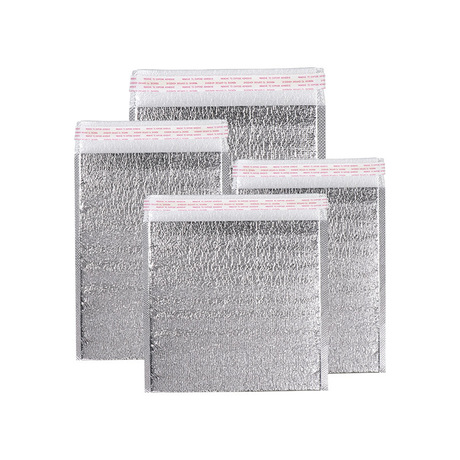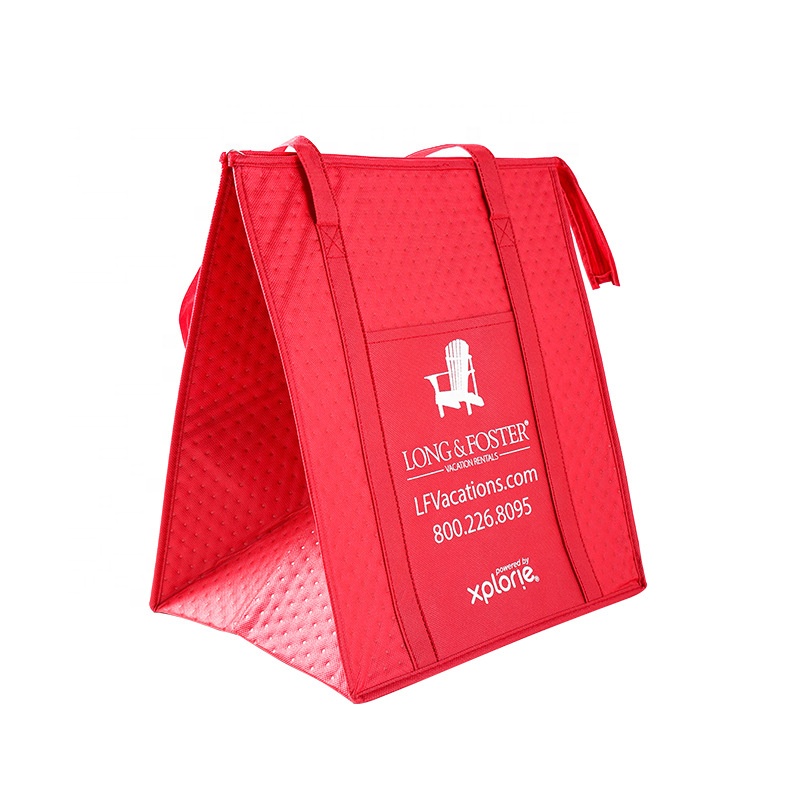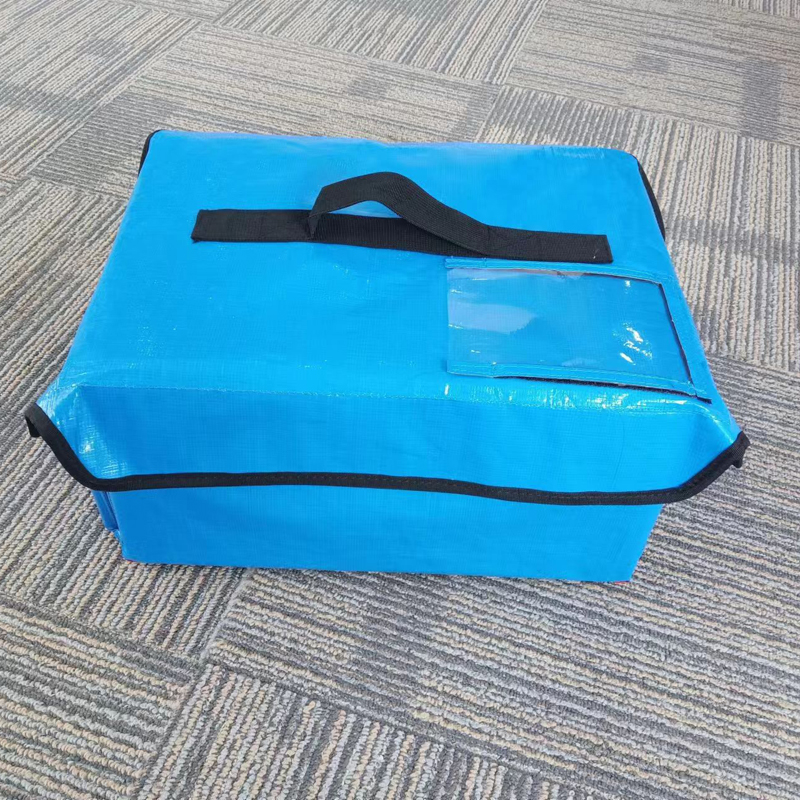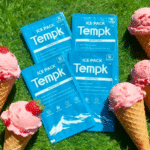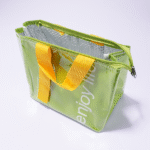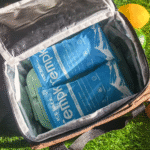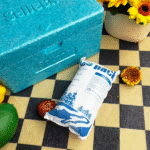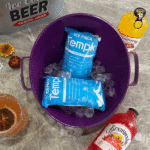1. Precauciones para el transporte de alimentos cocinados.
1. control de temperatura
Los alimentos cocinados deben mantenerse en el rango de temperatura adecuado durante el transporte para evitar el crecimiento bacteriano y el deterioro de los alimentos.. Los alimentos calientes deben mantenerse por encima de 60°C., y los alimentos fríos deben mantenerse por debajo de 4°C.
2. Seguridad en el embalaje
Garantizar que el embalaje proporcione una protección adecuada contra daños físicos y contaminación de los alimentos durante el transporte..
3. Gestión del tiempo
Minimiza el tiempo de transporte y consigue que la comida llegue a destino en las mejores condiciones.
4. Etiquetado e identificación
Marque claramente el embalaje., indicar "artículos perecederos", "refrigerado / aislados” y “artículos frágiles”, y recordar al personal de logística que los maneje con cuidado.
2. Pasos de embalaje
1. Preparar los materiales
-Incubadora eficiente (como EPS, PPE, o VIP)
-Condensan el medio (mi. gramo. bolsa de hielo en gel, material de cambio de fase o bolsa de hielo de inyección de agua) o calor medio (mi. gramo. piedra aislante termica, bolsa de agua caliente)
-Contenedor de embalaje a prueba de fugas
-Equipos de monitoreo de temperatura.
-Cojín de espuma o burbujas
2. comida envasada
Coloque los alimentos cocinados en un recipiente de embalaje a prueba de fugas para asegurarse de que no goteen durante el transporte..
3. Utilice un refrigerante o un medio caliente
Utilice refrigerante o medio de calor según el tipo de alimento.. Utilice bolsas de hielo en gel, materiales de cambio de fase o bolsas de hielo con inyección de agua para alimentos fríos, y utilice piedra aislante térmica o bolsas de agua caliente para la comida caliente.
4. Coloque el equipo de control de temperatura.
Coloque el equipo de monitoreo de temperatura en la incubadora para monitorear el cambio de temperatura en la incubadora en tiempo real para garantizar que los alimentos permanezcan dentro del rango de temperatura apropiado..
5. Llenar el vacío
Utilice almohadillas de espuma o burbujas para llenar los espacios en la incubadora y evitar que los alimentos se muevan y agiten durante el transporte..
6. Sellar la incubadora
Asegúrese de que la incubadora esté bien sellada y marcada en el exterior para recordarle al personal de logística que la manipule con cuidado..
3. Método de control de temperatura
1. Elija el material de aislamiento térmico apropiado
Utilice materiales aislantes de alta eficiencia., como EPS, EPP o incubadora VIP, que tienen un excelente rendimiento de aislamiento térmico y pueden mantener eficazmente la estabilidad de la temperatura interna.
2. Utilice el refrigerante adecuado o medios calientes
Elija el refrigerante o medio térmico adecuado según el tipo de alimento para garantizar que todo el proceso permanezca dentro del rango de temperatura adecuado. Utilice bolsas de hielo en gel, materiales de cambio de fase o bolsas de hielo con inyección de agua para alimentos fríos, y utilice piedra aislante térmica o bolsas de agua caliente para la comida caliente.
3. Monitoreo de temperatura en tiempo real
Coloque el equipo de monitoreo de temperatura en la incubadora para monitorear el cambio de temperatura en la incubadora en tiempo real para garantizar que la temperatura esté siempre dentro del rango seguro.. En caso de temperatura anormal, tomar medidas oportunas para ajustar la posición del refrigerante o medio de calor o aumentar la cantidad.
4. Las soluciones profesionales de Huizhou
Mantener la temperatura y frescura de los alimentos es fundamental durante el transporte de alimentos cocinados.. Huizhou Industrial Cold Chain Technology Co., Limitado. proporciona una serie de productos de transporte de cadena fría eficientes, la siguiente es nuestra propuesta profesional.
1. Productos de Huizhou y escenarios aplicables
medio de enfriamiento
1.1 Bolsa de hielo de inyección de agua:
-Temperatura principal de aplicación: 0℃
-Escenario aplicable: Adecuado para alimentos cocinados que deben mantenerse alrededor de 0 ℃, como algunos alimentos que deben mantenerse bajos pero no congelados.
1.2 Paquete de hielo de agua salina:
-Rango de temperatura de aplicación principal: -30℃ a 0 ℃
-Escenarios aplicables: Para alimentos cocidos que requieren temperaturas más bajas pero no temperaturas bajas extremas, como algunas carne y mariscos refrigerados.
1.3 Paquete de hielo en gel:
-Rango de temperatura de aplicación principal: 0℃ a 15 ℃
-Escenarios aplicables: Para alimentos cocidos a temperaturas ligeramente bajas, como ensalada cocida y algunos alimentos recién cocidos que deben mantenerse bajos.
1.4 Materiales orgánicos de cambio de fase.:
-Rango de temperatura de aplicación principal: -20℃ a 20 ℃
-Escenario aplicable: Adecuado para el transporte preciso de control de temperatura en diferentes rangos de temperatura, tales como alimentos cocinados de alta gama necesarios para mantener la temperatura ambiente o refrigerada.
1.5 Caja de hielo tabla de hielo:
-Rango de temperatura de aplicación principal: -30℃ a 0 ℃
-Escenario aplicable: Alimentos cocidos para el corto transporte y a cierta temperatura refrigerada.
2. Caja aislante
2.1 incubadora vip:
-Características: Utilice la tecnología de placa de aislamiento al vacío para proporcionar el mejor efecto de aislamiento.
-Escenario aplicable: Adecuado para el transporte de requisitos de temperatura extrema y alimentos cocinados de alto valor..
2.2Incubadora EPS:
-Características: Materiales de poliestireno, bajo costo, Adecuado para necesidades generales de aislamiento térmico y transporte de corta distancia.
-Escenario aplicable: Adecuado para el transporte de alimentos cocidos que requieren un efecto de aislamiento moderado.
2.3 incubadora del PPE:
-Características: material de espuma de alta densidad, proporcionar un buen rendimiento de aislamiento y durabilidad.
-Escenario aplicable: Adecuado para requisitos de transporte que requieren un aislamiento largo.
2.4 incubadora de poliuretano:
-Características: material de poliuretano, Excelente efecto de aislamiento térmico, Adecuado para el transporte de larga distancia y los altos requisitos del entorno de aislamiento térmico.
-Escenario aplicable: adecuado para el transporte de alimentos cocinados de alto valor y largas distancias.
3. Bolsa de preservación del calor
3.1 Bolsa de aislamiento de tela de oxford:
-Características: ligero y duradero, Adecuado para transporte de corta distancia.
-Escenario aplicable: Adecuado para el transporte de un pequeño lote de alimentos cocidos, fácil de llevar.
3.2 Bolsa de aislamiento de tela no tejida:
-Características: materiales amigables con el medio ambiente, buena permeabilidad al aire.
-Escenario aplicable: Adecuado para transporte de corta distancia para requisitos generales de aislamiento.
3.3 Bolsa aislante de papel de aluminio.:
-Características: calor reflejado, buen efecto de aislamiento térmico.
-Escenario aplicable: Adecuado para transporte a corta y mediana distancia y alimentos cocidos que requieren aislamiento de calor e hidratación.
4. Programas recomendados según el tipo de alimento cocinado
4.1 comida cocida refrigerada (como carne cocida, mariscos, etc.):
-Solución recomendada: Use una paquete de hielo de solución salina o una placa de hielo de caja de hielo, emparejado con una incubadora de PU o una incubadora de EPS, para garantizar que la temperatura se mantenga entre 0 ℃ y -5 ℃ para mantener los alimentos frescos y de calidad.
4.2 Ensalada delicatessen y delicatessen frescas:
-Solución recomendada: Utilice una bolsa de hielo en gel con una incubadora de EPP o una bolsa aislante de papel de aluminio para garantizar que la temperatura se mantenga entre 0 ℃ y 10 ℃ para mantener el sabor y la frescura de los alimentos..
4.3 Alimentos cocinados a temperatura normal. (como pasteles cocidos, pan, etc.):
-Esquema recomendado: Utilice materiales de cambio de fase orgánica, Con bolsa aislante de tela Oxford o bolsa aislante no tejida, para garantizar que la temperatura se mantenga en aproximadamente 20 ℃, para evitar la humedad y el deterioro de los alimentos.
4.4 Los alimentos delicatessen deben transportarse a temperaturas extremadamente bajas (como alimentos cocinados congelados rápidamente):
-Solución recomendada: Use hielo seco, combinado con una incubadora VIP, para garantizar que la temperatura se mantenga a-78,5 ℃, para mantener los alimentos congelados y frescos.
Mediante el uso de los productos de almacenamiento y aislamiento en frío de Huizhou, Puede asegurarse de que los alimentos cocinados mantengan la mejor temperatura y calidad durante el transporte.. Estamos comprometidos a brindar a nuestros clientes las soluciones de transporte de cadena de frío más profesionales y eficientes para satisfacer las necesidades de transporte de diferentes tipos de alimentos cocinados..
5. Servicio de monitoreo de temperatura
Si desea obtener la información de temperatura de su producto durante el transporte en tiempo real, Huizhou le proporcionará un servicio profesional de control de temperatura., pero esto traerá el costo correspondiente..
6. Nuestro compromiso con el desarrollo sostenible
1. Materiales respetuosos con el medio ambiente
Nuestra empresa está comprometida con la sostenibilidad y utiliza materiales respetuosos con el medio ambiente en las soluciones de embalaje.:
-Contenedores aislantes reciclables: Nuestros contenedores de EPS y EPP están fabricados con materiales reciclables para reducir el impacto medioambiental..
-Medio refrigerante y térmico biodegradable.: Proporcionamos bolsas de hielo en gel biodegradables y materiales de cambio de fase., seguro y respetuoso con el medio ambiente, para reducir el desperdicio.
2. Soluciones reutilizables
Fomentamos el uso de soluciones de embalaje reutilizables para reducir residuos y reducir costes.:
-Contenedores aislantes reutilizables: Nuestros contenedores EPP y VIP están diseñados para uso múltiple, proporcionando ahorros de costos a largo plazo y beneficios ambientales.
-Refrigerante reutilizable: Nuestras bolsas de hielo en gel y materiales de cambio de fase se pueden utilizar varias veces, reduciendo la necesidad de materiales desechables.
3. Práctica sostenible
Nos adherimos a prácticas sustentables en nuestras operaciones.:
-Eficiencia energética: Implementamos prácticas de eficiencia energética durante los procesos de fabricación para reducir la huella de carbono..
-Reducir el desperdicio: Nos esforzamos por minimizar los residuos a través de procesos de producción eficientes y programas de reciclaje..
-Iniciativa Verde: Participamos activamente en iniciativas ecológicas y apoyamos los esfuerzos de protección del medio ambiente..

















